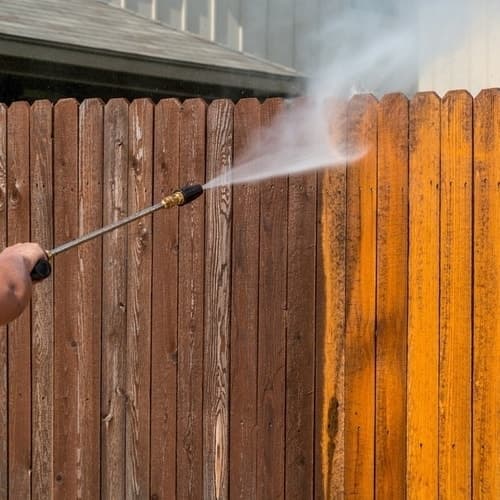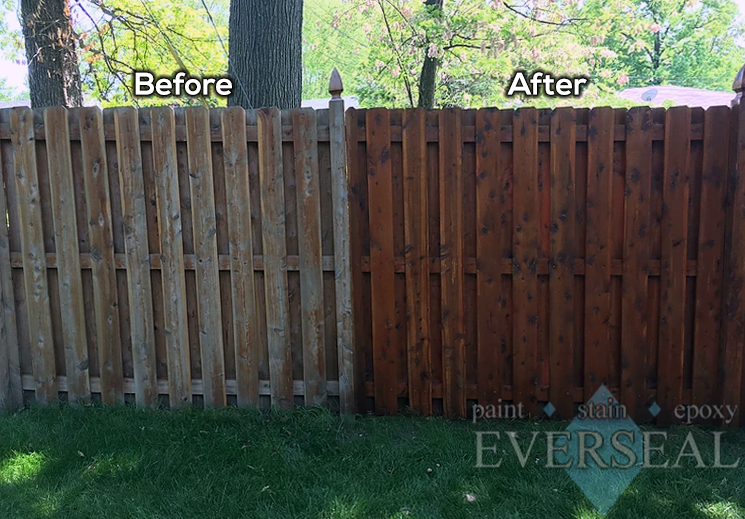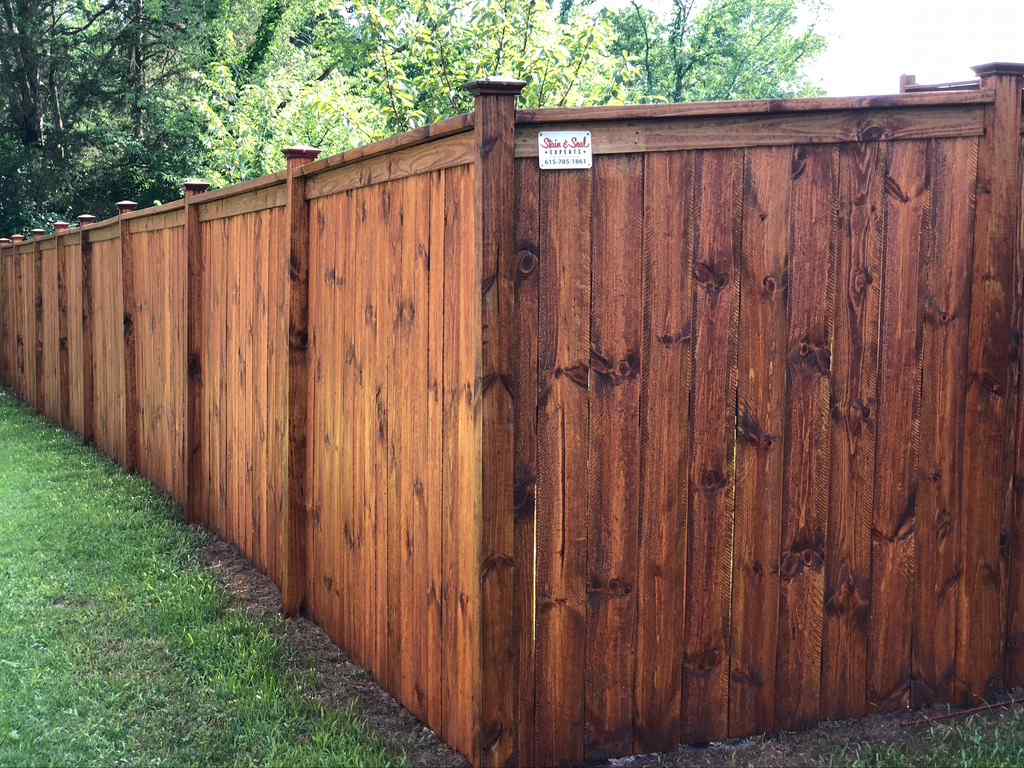The Ultimate Overview to Fencing Staining: Tips and Techniques You Need to Know
In the world of home upkeep, fence staining usually becomes a job that requires focus however is frequently forgotten. The procedure includes greater than just slapping on a coat of stain; it demands precision, expertise, and the best techniques to ensure a resilient and visually enticing result. Whether you are an experienced DIY lover or a property owner aiming to enhance the curb charm of your residential property, understanding the nuances of fence discoloration can make a significant distinction. Allow's explore the complexities of this apparently straightforward yet surprisingly complex job to open the secrets that can change your fence from a simple limit to a standout function of your outdoor space.
Advantages of Fence Discoloration
What advantages does fence staining offer to homeowners seeking to improve both the appearance and durability of their outside structures? Fence staining provides various benefits that make it a prominent choice for homeowners looking to protect and enhance their fences.
Additionally, fence staining helps to shield the timber from the aspects, such as rain, snow, and UV rays. This defense not just protects against the wood from decaying and decaying yet additionally expands its life-span, conserving home owners money on expensive repairs or replacements in the future. Fence Staining Service. Additionally, discoloring develops an obstacle against insects, such as termites and woodworker ants, which can create substantial damage to without treatment timber fencings
Choosing the Right Stain

One more factor to think about is the level of defense you desire for your fence. Transparent discolorations give marginal protection versus UV rays and wetness, while semi-transparent and strong discolorations offer boosted defense. If your fencing is subjected to extreme weather problems, a strong stain may be the most effective option to ensure optimum toughness.

Preparing Your Fence
Previous to using the selected tarnish, complete preparation of the fencing surface area is vital to make certain ideal results. Begin by cleaning up the fencing to remove dust, debris, and any type of old tarnish or paint. Make needed repair work to ensure the fencing is structurally audio.
After cleaning and repairing, it is crucial to sand the fence to develop a smooth surface for the discolor to stick to. Make use of a medium-grit sandpaper to eliminate any rough patches or blemishes. Clean down the fencing with a tack towel to get rid of any remaining dust particles.
Applying the Discoloration

When applying the tarnish, function systematically Fence Staining Nashville section by area, beginning with the top and moving downwards to avoid drips and make sure even protection. Use long, smooth strokes to use the discolor towards the timber grain, enabling for much better penetration and an extra expert finish. Make sure to preserve a wet side to avoid lap marks and overlap each stroke a little to blend the tarnish flawlessly. When the first layer is complete, enable it to completely dry according to the maker's instructions before deciding if a second coat is needed for added security and long life.
Maintaining Your Stained Fence
To ensure the durability and aesthetic appeal of your discolored fencing, normal maintenance is vital. The primary step in preserving your tarnished fencing is to frequently check it for any type of indications of wear, such as fading, peeling, or cracking. Resolving these concerns promptly can avoid further damage and extend the life of your stain. It is recommended to clean your stained fence a minimum of once a year using a mild detergent and water to remove dust, grime, and mildew buildup. After cleaning, allow the fencing to completely dry entirely prior to using any type of extra treatments or spots. Furthermore, it is critical to monitor the sealer on your discolored fence and reapply it as required to shield the timber from dampness and UV damages. Finally, maintain plant life cut and far from the fence to avoid mold and mold development. By following these upkeep ideas, you can make sure that your discolored fence continues to be in top problem for many years ahead.
Conclusion
In verdict, fence discoloration offers many benefits such as defense against weathering and boosting the aesthetic charm of your building. By selecting the appropriate discolor, effectively preparing your fence, using the stain appropriately, and preserving it frequently, you can guarantee your fence stays in top problem for years to find. Complying with these tips and strategies will aid you accomplish a wonderfully stained fencing that will stand the test of time.